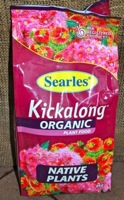Local North Queensland information for Local North Queenslanders.
Is your garden looking daggy?
.. lacking vigour and vitality?
.. then FERTILISE!
Yes, You Can Fertilise Native Plants!
Native plants, like all living things, need nutrients to survive. If you have soil which is lacking in nutrients you will need to supplement with fertiliser. It’s simple if you follow two golden rules:
- Check the composition of the fertiliser. The phosphorous (P) level must be 3% or less for native plants. Native plants are very sensitive to phosphorous and too much P will kill them.
- Read the directions and don’t exceed the recommended rate. Fertiliser is like medicine – the right amount works wonders, too much is lethal.
Trees and shrubs need a fairly high nitrogen content in the fertiliser – at least 10% – so products such as Dynamic Lifter which have low N don’t give spectacular results. Also, the phosphorus content may be too high, so read the label very carefully.
Products such as Aquasol or other liquid/soluble fertilisers can be used but are rather messy to apply as they have to be measured carefully and mixed with water before applying.

 We recommend the following fertilisers which are ideal, and quite safe, for all natives. These fertilisers have high nitrogen and low phosphorous so they are quite safe for all natives. In fact, they bring about a magical transformation.
We recommend the following fertilisers which are ideal, and quite safe, for all natives. These fertilisers have high nitrogen and low phosphorous so they are quite safe for all natives. In fact, they bring about a magical transformation.
Incitec CK 77S is available in 40 kg bags from TGT Mareeba and other agricultural suppliers, for a cost of about $601. The analysis of Incitec CK 77S is : N-P-K: 13.0 – 2.2 – 13.5.
Hi Fert HF 78 S is available in 40 kg bags from TGT Mareeba and other agricultural suppliers, for a cost of about $601. The analysis of Hi Fert HF 78 S is : N-P-K: 13.9 – 2.2 – 13.5.
Searles Kickalong Organic Plant Food is available in 2.5 kg and 4 kg bags from our Retail Centre for about $12 and $181 a bag. The analysis of Kickalong Organic Plant Food is: N-P-K: 3.3 – 2 – 5.5.
Searles Native Plant Food is available in 5 kg bags from our Retail Centre for about $201 a bag. The analysis of Native Plant Food is: N-P-K : 9.5 – 1 – 8.5.
Incitec CK 77S or Hi Fert HF 78 S is ideal for acreage blocks, while the Searles fertilisers are perfect for the average suburban garden.
Here at Yuruga Nursery, our gardens are getting so extensive now, that it takes about 10 x 40 kg bags to fertilise them once. You can see that buying larger bags is the only way for us to go, but if you have a small number of trees the smaller pack would be best for you.
How to Fertilise Your Native Garden:
Incitec, Hi Fert and Searles products are granular fertilisers which can be very easily applied. Simply tip the fertiliser into a bucket and walk around your garden broadcasting the granules amongst the plants, as if you are feeding the chooks. Too little is safer than too much, so spread it lightly. Never dump a handful at the base of a plant unless you want to kill it!
These fertilisers must be watered in soon after applying. That’s why the wet season is a good time to fertilise since the rain will do it for you.
Searles Kickalong Organic Plant Food fertiliser has to be mixed with water before applying. The ratio is: 1 tablespoon (approximately 10g) of fertiliser per 1 cup of water.
September is also a good time to fertilise, but since it is unlikely to rain you will need to water it in. The best way to do this is with light watering in the afternoon, followed by a heavy watering next morning. The afternoon watering softens the granules during the night and much less water is then required to get the fertiliser into the ground.
| Recommended Fertilisers for Native Gardens |
|||
| N | P | K | |
| Searles Kickalong Organic | 3.3 | 2 | 5.5 |
| Incitec CK 77S | 13 | 2.2 | 13.5 |
| Hi Fert HF 78 S | 13.9 | 2.2 | 13.5 |
| Searles Native Plant Food | 9.5 | 1 | 8.5 |
| The Golden Rule: The Phosphorous (P) must be 3% or less. |
|||
Lime, Dolomite or Gypsum?
No matter what you see on TV, read in books, or hear from other people, DON’T use lime or dolomite in your native garden. Here’s why:
Native Plants and pH:
Most native plants require acid soil. Most local soils are acid. Therefore, it is pretty unlikely that you will need to alter the pH of your soil.
Unless your soil is extremely acid to start with, the use of lime or dolomite will raise the pH and make your soil unsuitable for natives.
Breaking Up Clay Soils:
Gypsum breaks up clay but unlike lime and dolomite, it does so without altering the pH. So, if you’ve got clay soils you can apply gypsum freely but DON’T use lime or dolomite!!!
To condition heavy clay soils you should apply a heavy dressing of gypsum and then dig it in.
The rate of application is not critical – simply sprinkle the gypsum over the surface like talc powder. After working the gypsum into the clay, it should be left for a few weeks, then cultivated again. It won’t happen overnight, but after several weeks you will notice a dramatic change to the texture of the soil.
The best treatment for clay soil is an initial treatment with gypsum followed by a good layer of mulch which is kept topped up as it decomposes.


Use gypsum NOT lime or dolomite in your native garden.
Tips:
Don’t:
- Don’t use dolomite or lime on native plants.
- Don’t dump the fertiliser in piles. Make sure you broadcast it evenly and lightly.
- Don’t fertilise at the time of planting, as it is too easy to apply too much and kill the plant.
- Don’t use farm fertilisers without first checking the N-P-K analysis. For instance Q5 is completely unsuitable for natives as the N-P-K is 5- 5.9 – 4.9.
- Don’t overdo it!
Do:
- Do take the plunge and give it a go, but start off lightly at first until you get the hang of it.
- Check the N-P-K before you start (the P must be 3% or less).
- Fertilise twice a year.
Notes:
- Approximate prices as of September 2009.

